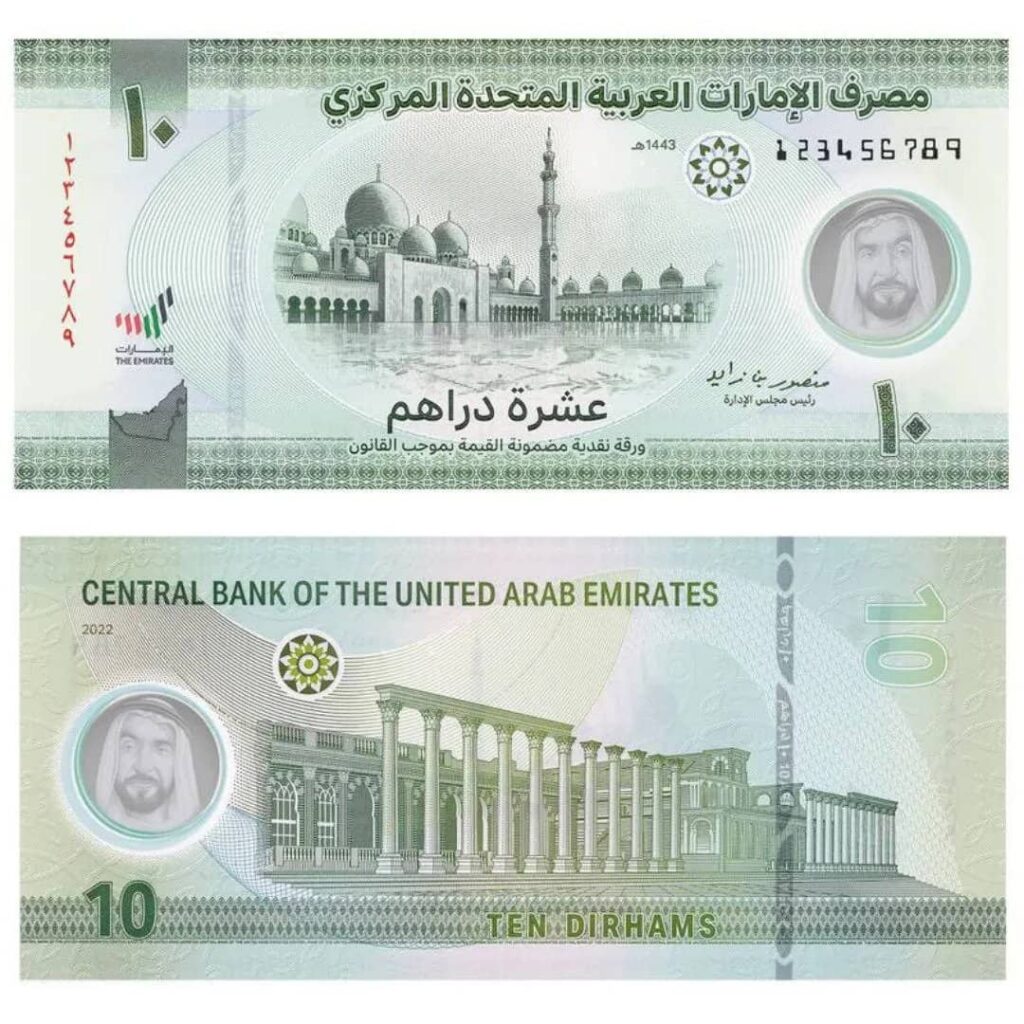Have you seen the new polymer notes that have been released in the United Arab Emirates? If this is the case, you may see a few new features that you are unfamiliar with. For example, did you know that the denomination of each note is written in English, Arabic, and Braille?
The new Dh50, Dh10, and Dh5 notes in circulation, as well as why polymer notes were introduced in the UAE, are detailed below.
Features of the Dh50 note
- Sheikh Zayed bin Sultan Al Nahyan’s late portrait.
- The printing year in Hijri (1443).
- Serial numbers are printed horizontally in black magnetic ink in English.
- Arabic serial numbers are printed vertically in red ink.
- The national brand of the United Arab Emirates.
- A map of the United Arab Emirates.
- A portrait of the UAE’s Founding Fathers.
- Signature of His Highness Sheikh Mansour bin Zayed Al Nahyan, Chairman of the CBUAE Board of Directors.
- A photo of the memorial to the Oasis of Dignity (Wahat Al Karama)
When exposed to direct light, a circular see-through printed design fits perfectly to its matching design on the face of the banknote.
- Touch markings in Braille
- The gregorian year 2021
- A picture of the Etihad Museum
Dh10 note
The Dh10 note has the same characteristics as the Dh10 note. The note is, nonetheless, green in color, just like the paper note of the same denomination. On one side, the note features an image of the Sheikh Zayed Grand Mosque, and on the other, a photograph of the Khorfakkan amphitheater, a cultural monument in Sharjah.
Dh5 note
The Dh5 polymer note, like the Dh10 polymer note, is the same color (orange) as its denomination’s paper note.
The image of the Ajman Fort, an ancient monument that bears evidence of the UAE’s predecessors’ cultural and historical history, appears on the front center face of this banknote, while the image of Dhayah Fort, a famous cultural landmark in Ras Al Khaimah, appears on the other side.
Why polymer?
Polymer banknotes have been shown to be more durable and environmentally friendly than paper banknotes, according to the UAE Central Bank. Paper banknotes are destroyed and disposed away at the end of their useful lives. Polymer banknotes are shredded, crushed, and repurposed in the production of ordinary plastic materials. According to the UAE Central Bank, this re-use of polymer supports the UAE’s larger sustainability aim of reducing waste and improving resource use and recycling.
